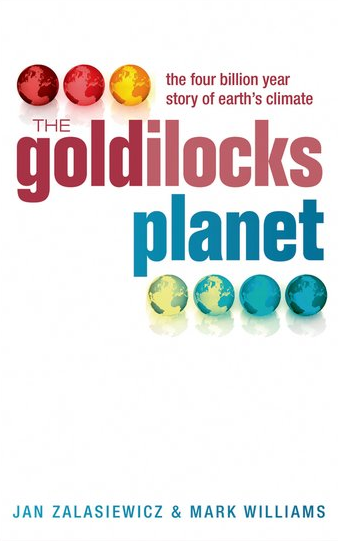
What do we know about the Earth’s ancient climate, and how do we know it? What can it tell us about its – and our – possible future? Leicester professor of paleobiology Jan Zalasiewicz explores these questions with me in this interview from the archive.
In the interview I asked Jan: if by some miracle we had been able to position ourselves above the Archean Earth [4 to 2.5 billion years ago], what would we have seen? Would it have been an entirely alien vista?
Jan Zalasiewicz: Oh yes, and wouldn’t that be lovely? To borrow the Tardis and simply look at the Earth. One thing you could say is that the Earth would be a different colour. These were the days of no oxygen and therefore no oxidation. The colours would be shades of greys, browns, blacks, perhaps some green, but maybe not biological green, but mineral green, rather than the reds and yellows of the rust that developed when oxygen came into the atmosphere some billion or so years later.
Also the shape of the land and the sea – plate tectonics was probably working differently then. The Earth was hotter inside. Continents might well have been smaller and moving around rather more quickly. The amount of sea in relation to land is a big unknown. Oceans are not preserved from those days. Nonetheless one has the vaguest of pictures of a different and alien planet then.
